Slickcall
Slickcall bridged the digital divide by enabling seamless international calls, ensuring high success rates, and making global communication affordable.
Tasks
Research / UX UI Design / Branding / Prototyping / Usability Testing
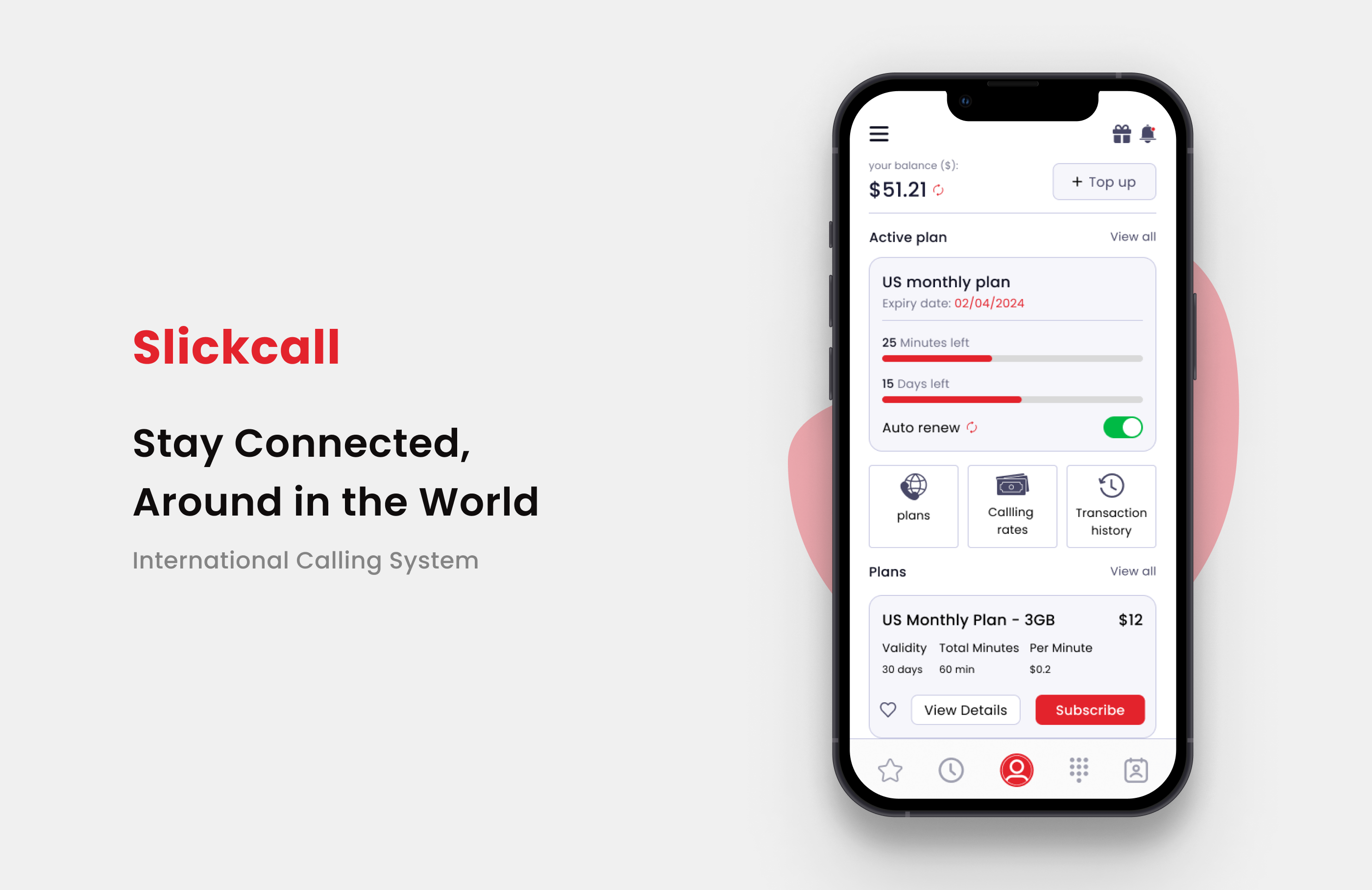
Project Overview
Description

My Goal

My role was to craft an intuitive and efficient experience for users needing seamless international communication. I needed to design a solution that prioritized ease of use and accessibility. My focus was on simplifying the navigation and minimizing cognitive load, ensuring users could quickly complete their primary tasks: purchasing calling plans and making calls.
- Minimal Navigation: Keep the user’s journey to 2 or 3 taps at most.
- Multi-Purpose Screens: Each screen should do more, for instance, displaying call history and credit balance on the home screen.
- Fast Actions: Include quick-access buttons for frequent tasks (e.g., favorites, plan renewals) directly from the home screen.
Problem Statement & Solution
Problem Statement

Many users, especially those with inconsistent or limited internet access, struggle with navigating complex apps when attempting to make international calls. Users often fail to easily find and renew their calling plans, check their remaining balance, or quickly access their most-called contacts.
This can lead to frustration, missed opportunities to stay connected with loved ones, and wasted time searching through unnecessary features. The overwhelming number of steps to complete basic actions, such as renewing an offer or starting a new call, complicates the user experience and causes them to abandon the app or make costly mistakes.
Possible Solution

- Simplifying the navigation
- Reducing the number of steps to key actions
- Consolidating information in multi-purpose screens
Discover Phase
Qualitative Research

- What features do you expect to see on the home screen of a calling app?
- How do you typically navigate through an app to initiate a call?
- What motivates you to use paid international calling apps over free alternatives like WhatsApp or Skype?
- Have you ever had trouble understanding your plan’s cost, auto renewal or validity?
- What difficulties do you face when trying to manage your contacts within the app?
- How would you prefer to be notified about plan expiration or low credit?
Some quotes from the interviews

Unclear Plan Information: “I sometimes struggle to understand how much credit or minutes I have left. I wish it was more prominently displayed so I don’t have to dig through the app to check.”
Preference for Speed: “When I need to make a call, I want it to be quick. I don’t want to deal with a slow app or too many options in my way.”
Minimal Design Expectation: “I prefer an app that’s simple and doesn’t overwhelm me with too many features. Just a clean design with the essentials would make my experience a lot better.”
Define Phase
Empathy Map

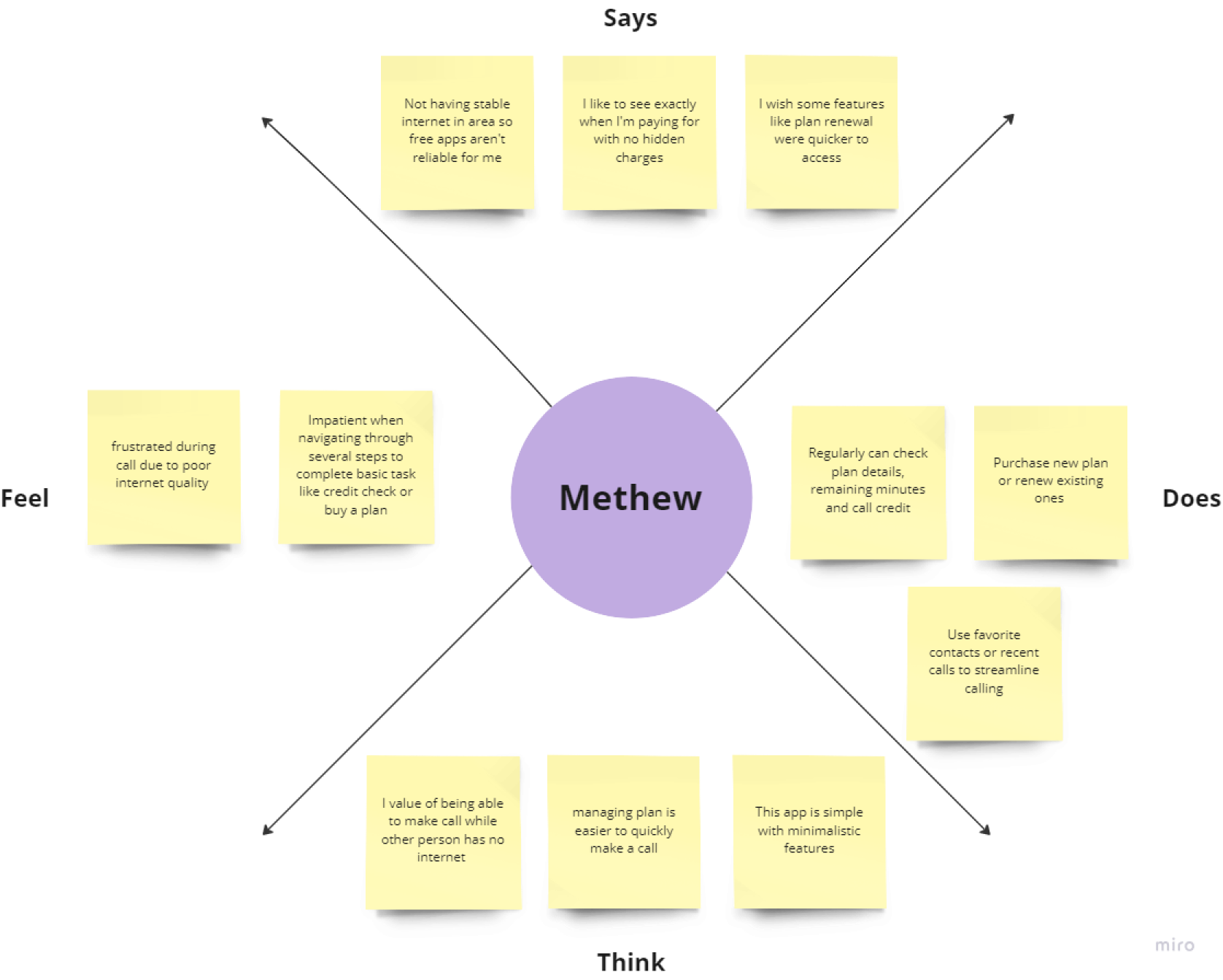
Pain
- Both parties need a stable internet connection to communicate.
- Hidden costs such as data usage, making “free” calls expensive.
- Limited ability to call non-tech-savvy individuals or those without smartphones.
- Frustration with app crashes or poor performance during weak internet connections.
Gain
- Reliable international calls even without internet for the recipient.
- The recipient doesn’t need internet access to receive a call.
- Transparent pricing with no hidden fees or unexpected charges.
- Can call any phone number globally using just your mobile number.
User Persona


Sarah Thompson
- 32 Years old
- Unmarried
- New York, USA
- Nurse
- 2 children
Bio

Key Characteristics

- Provide a user-friendly experience with minimal navigation, so Sarah can easily access favorite contacts, manage her plan, and see her credit balance.
- Offer clear, transparent pricing without hidden fees or unexpected costs, making it easy for users like Sarah to know exactly what they’re paying for.
- Fast actions and multi-purpose screens that allow Sarah to complete key tasks, such as renewing her plan or making calls, with just a few taps.
Frustrations & Pain points

- Poor call quality or dropped calls when her family’s internet connection is unstable.
- Both she and her family need a good internet connection to communicate, which isn’t always possible.
- Hard to track plan usage, credits, and renewal status in calling apps.
Card Sorting

Unsorted Cards

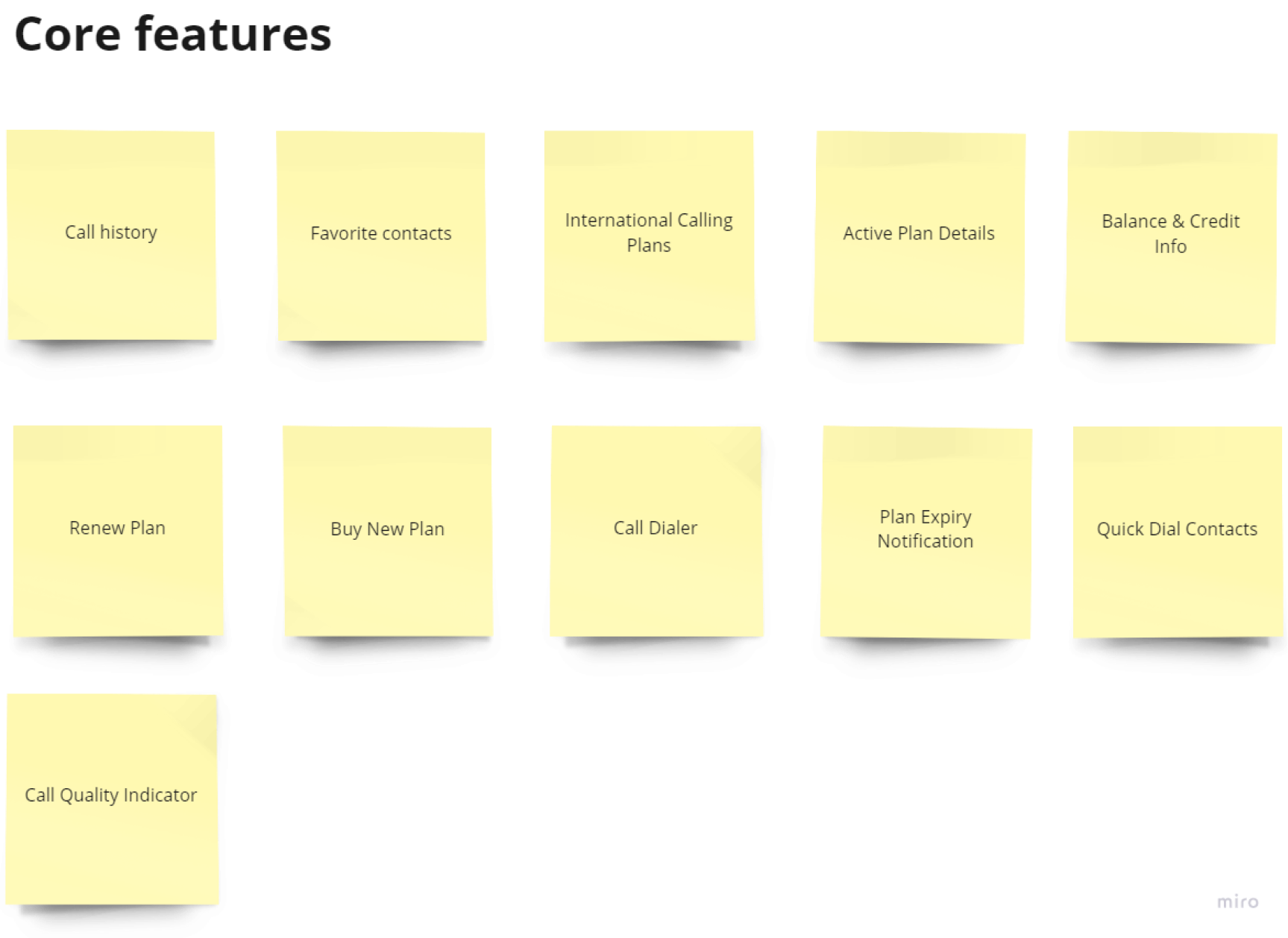
Supporting features
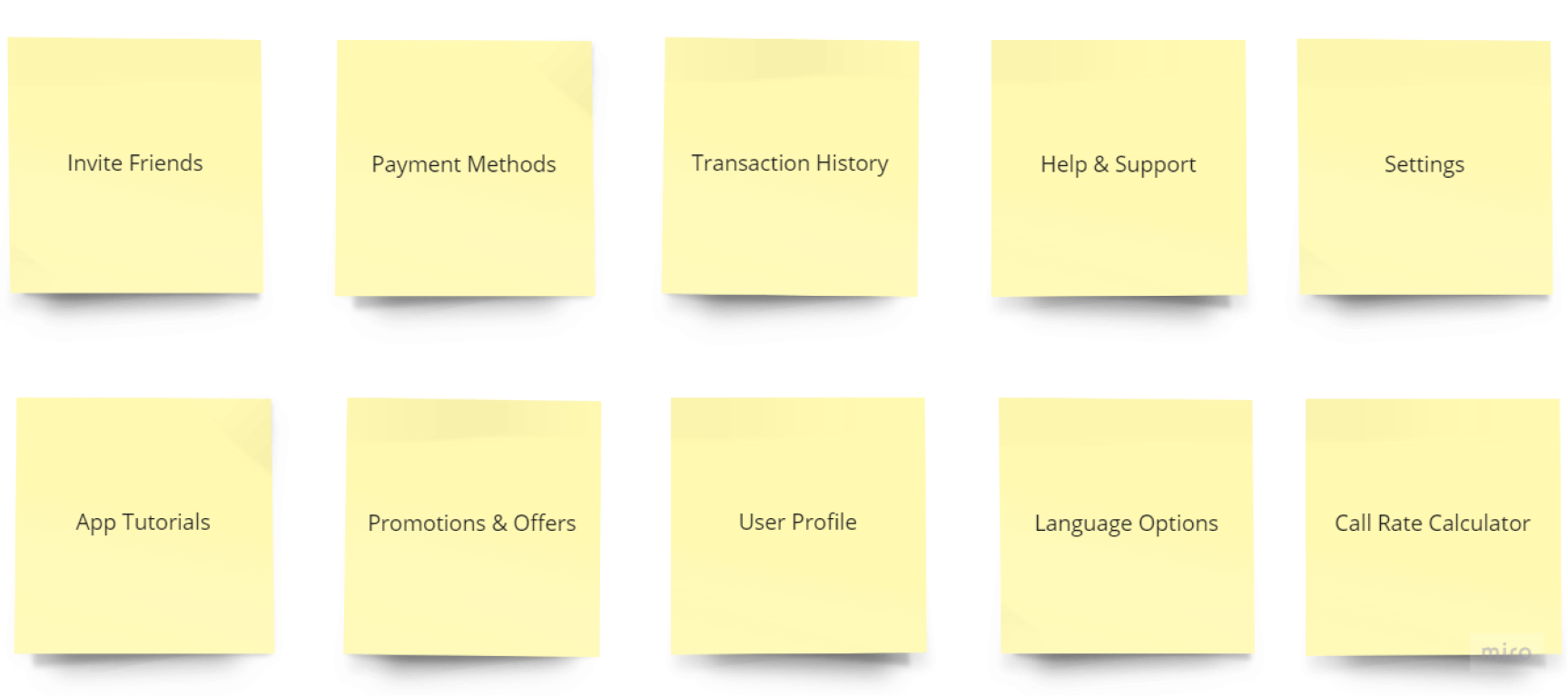
Feature prioritization matrix


Information architecture

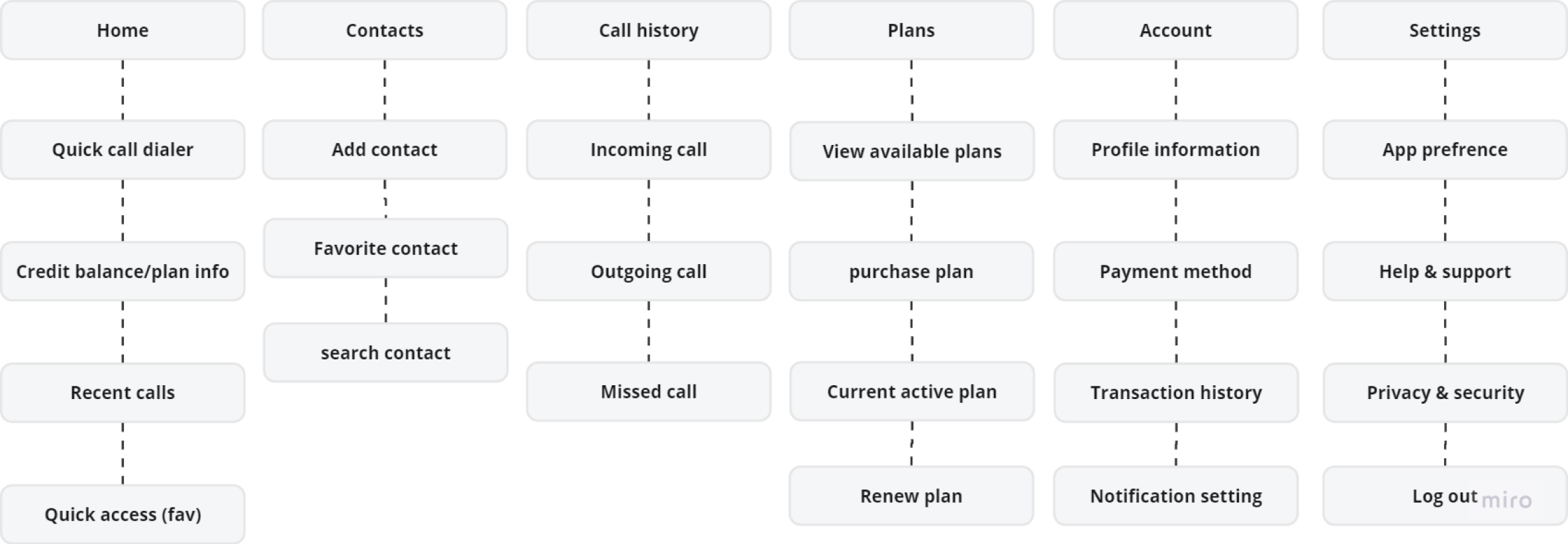
Wireframes

Paper sketches
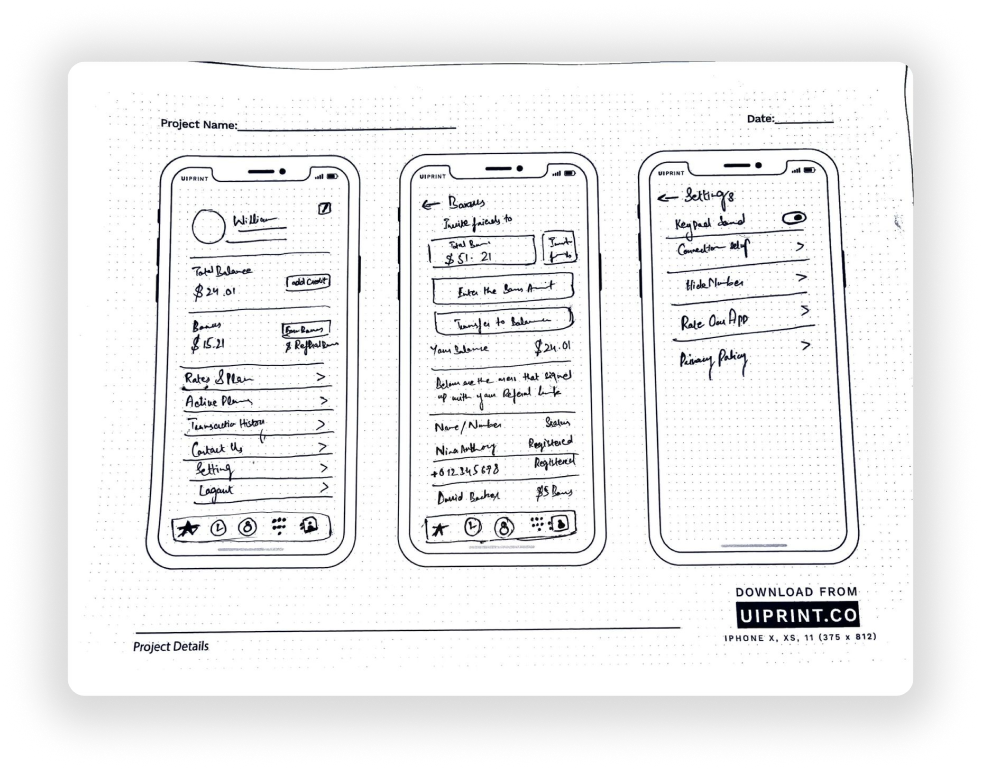
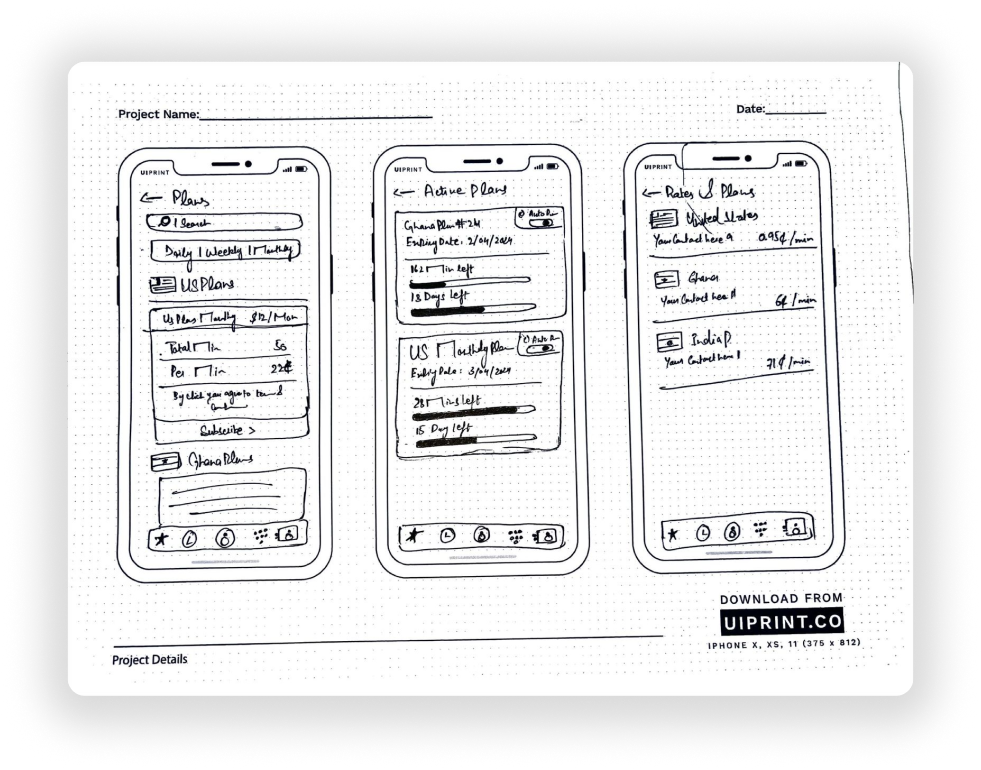
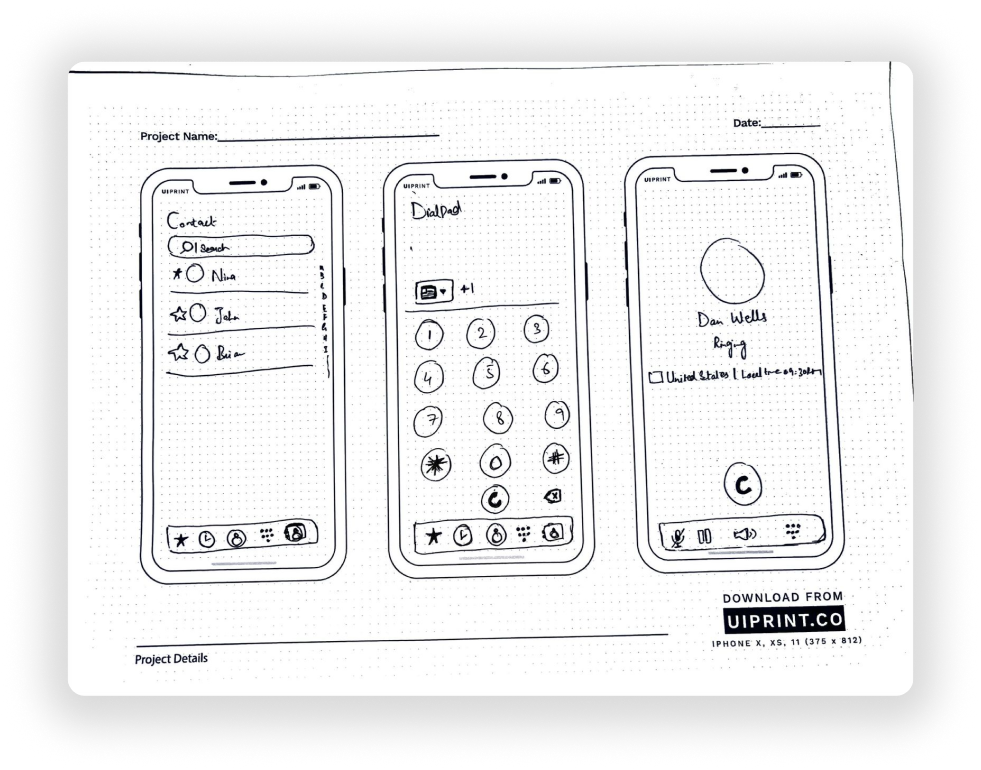
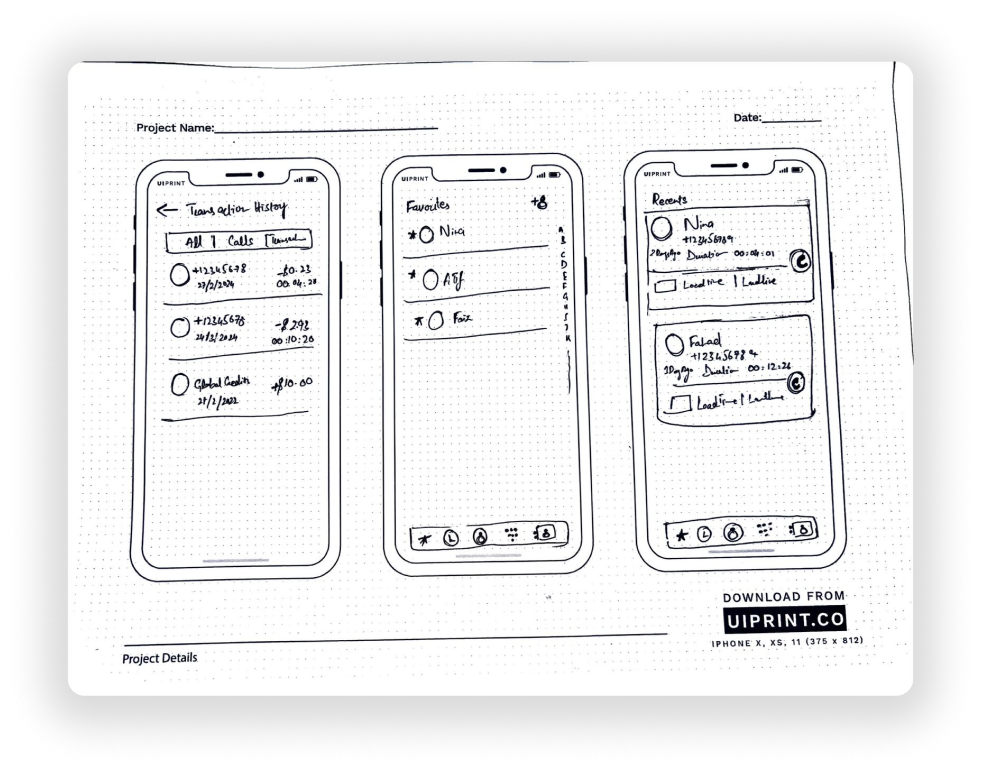
Design System
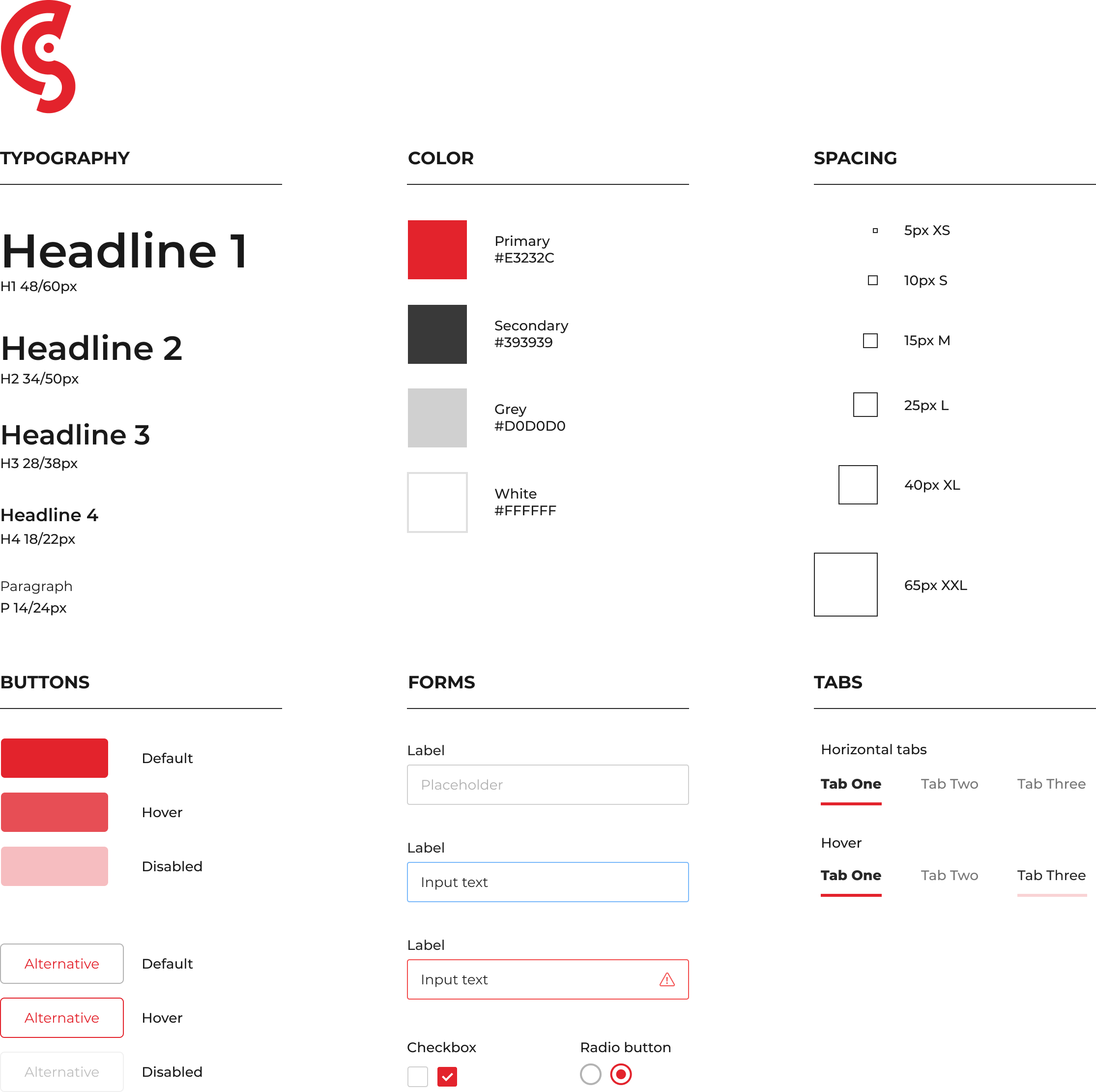
Final UI Design

Usability Testing Scenario: Managing Account Balance and Plans in Slickcall

After the visual design was complete I tested the prototype with some new and returning users I wanted to see how user-friendly the application is. The test was conducted over google meet video calls where the participants were given the following tasks while I observed how they navigated through the application
Objective: Observe how users navigate the updated Slickcall app to manage their account balance, active plans, and find specific features. Identify areas of confusion, hesitation, or frustration, as well as behaviors indicating satisfaction or efficiency.
Given Scenario:
“Imagine you are a regular user of Slickcall, and you need to check your current balance, review your active plan, and ensure that auto-renewal is turned on. Additionally, you want to look for any available new plans and, if you find one you like, subscribe to it. Finally, you want to check your transaction history to confirm a recent top-up.”
Tasks performed:
- Check Balance: Locate your current balance and ensure it is up to date.
- Review Active Plan: Navigate to the active plan section, view the remaining minutes and days, and check if auto-renew is enabled.
- Explore New Plans: Go to the plans section, explore different options, and select one to view its details. If it fits your needs, proceed to subscribe.
View Transaction History: Find and review the transaction history section to verify a recent top-up.
Follow-Up Questions:
- Navigation: Did you find it easy to locate the balance and plan information? Why or why not?
- Understanding: Was the information about your plan usage (minutes and days left) easy to understand?
- Plan Subscription: How easy or difficult was it to explore and subscribe to a new plan?
- Suggestions: Is there anything you would change to make this app easier to use?
Suggestion to make the experience better

- Use Iconography to Enhance Readability
- Prioritize and Simplify Navigation Options
- Provide a brief summary of the user’s active plan directly on the profile page (e.g., minutes left, expiry date).
- Add Notification or Alert Indicators
Implementing feedback

Based upon the testing and the feedback, I planned something new for this screen.
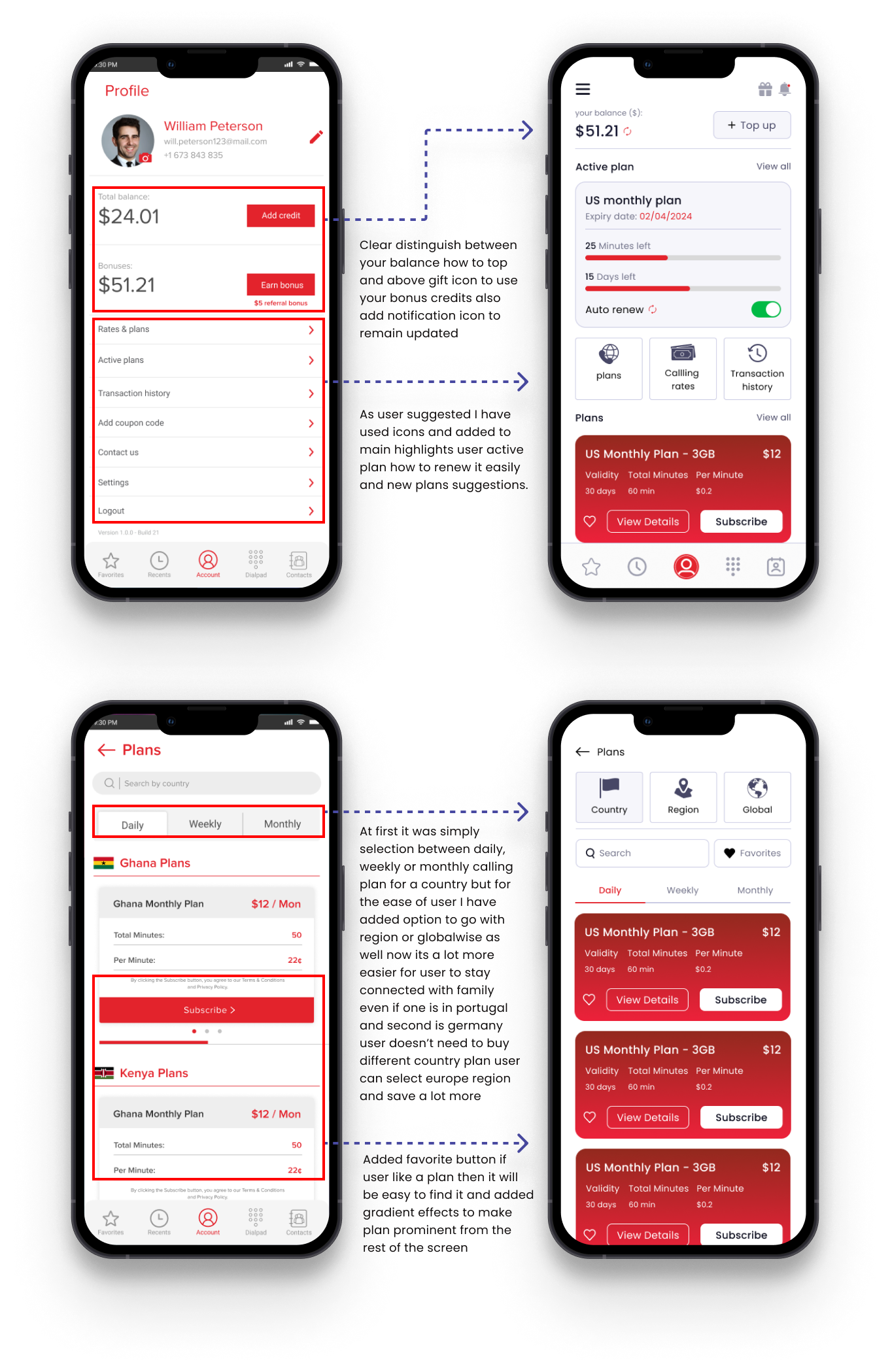
Success metrics

My learning

Working on the Slickcall project taught me the importance of user-centered design in solving real-world connectivity challenges. I learned how to simplify complex navigation and enhance usability, making it easy for users to access essential features like balance, plans, and transaction history.
This experience also deepened my understanding of prioritizing features that address users’ primary needs for reliable and affordable international communication.
